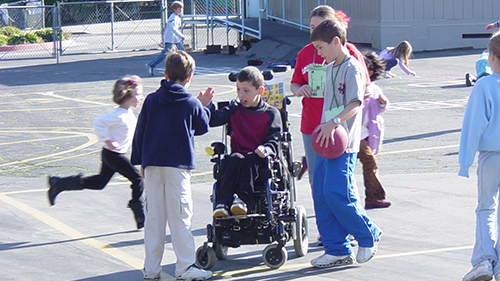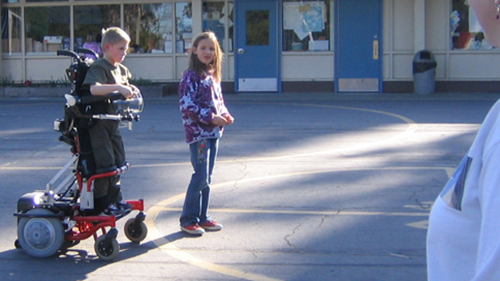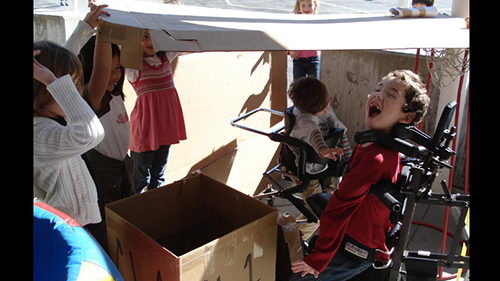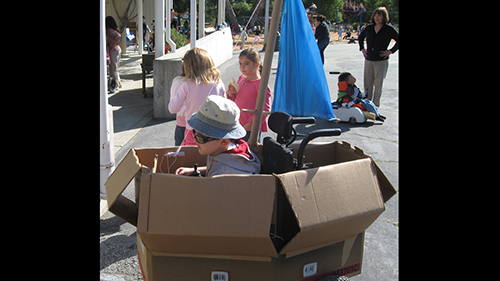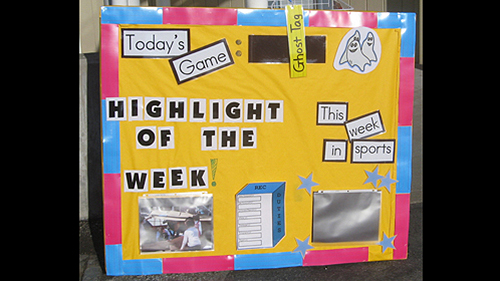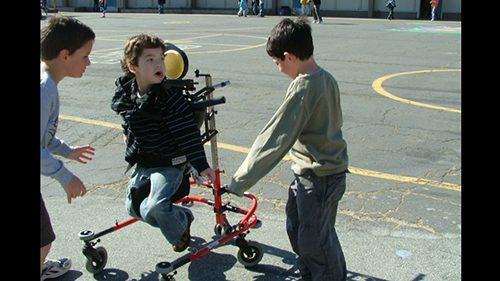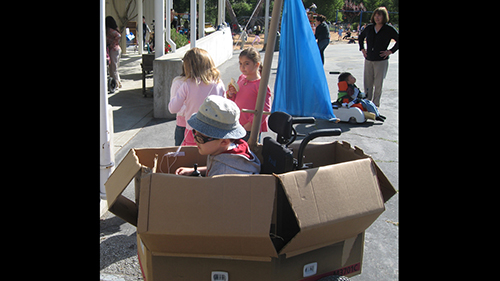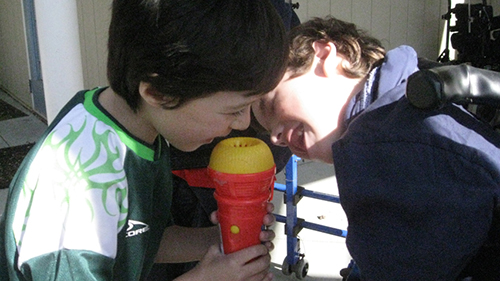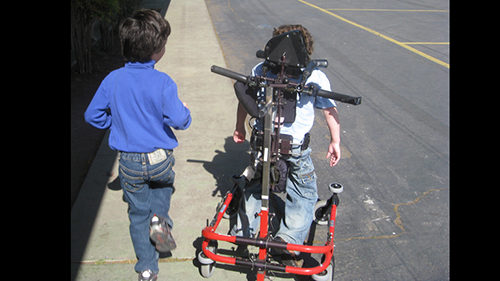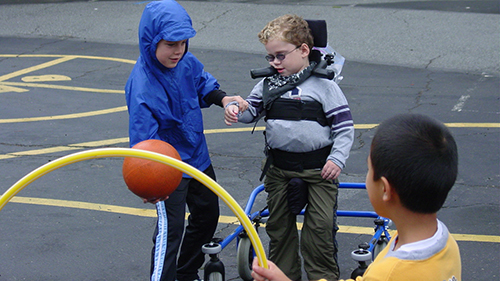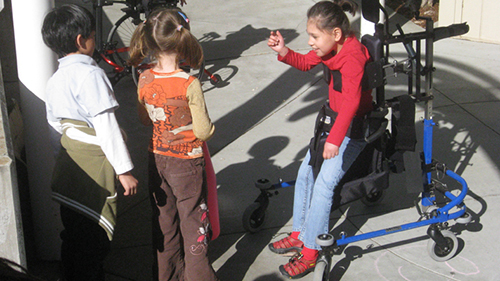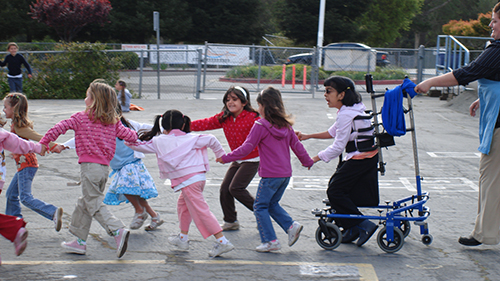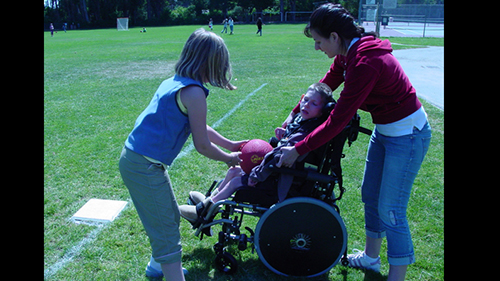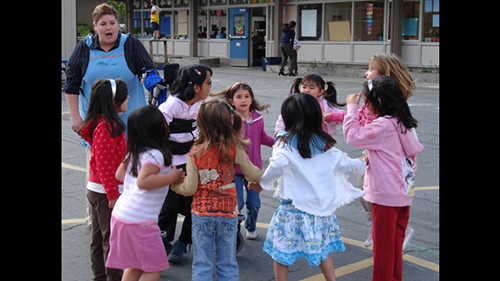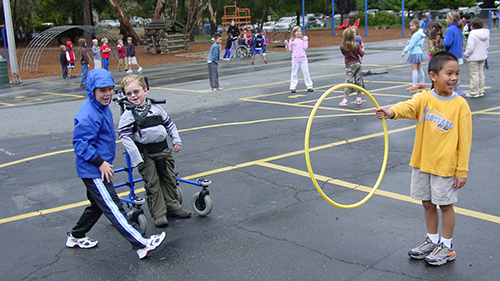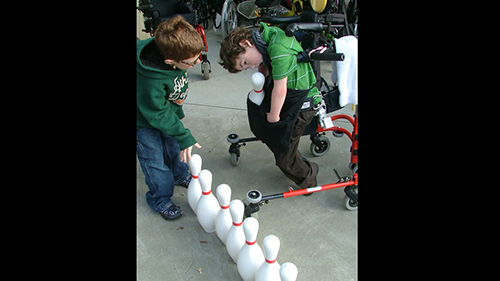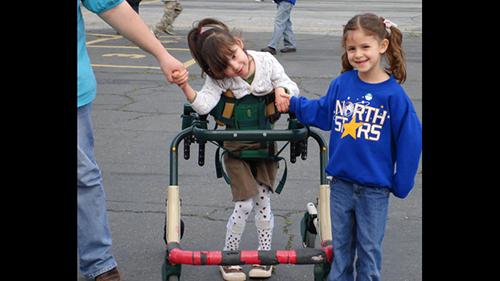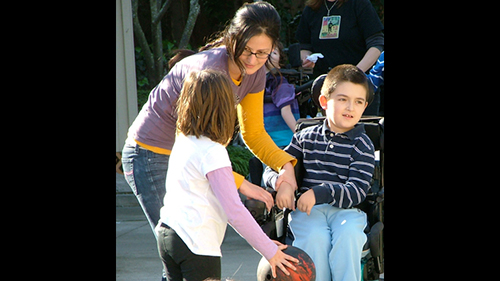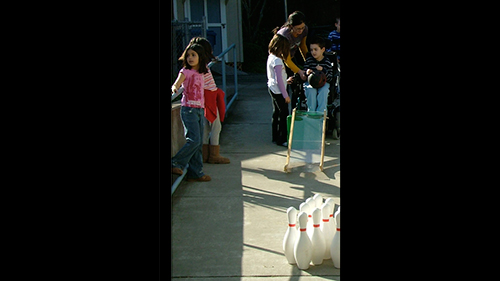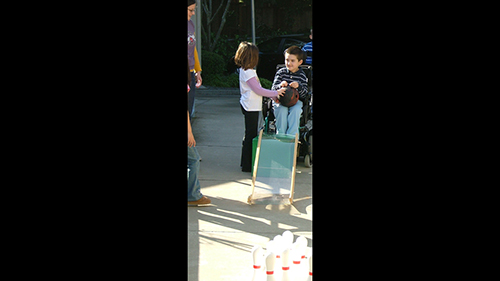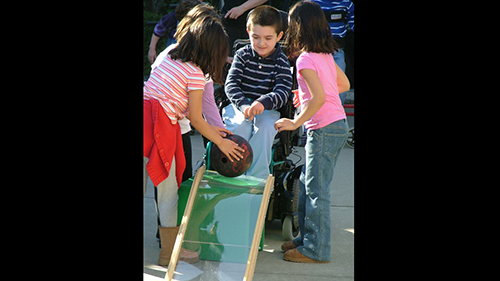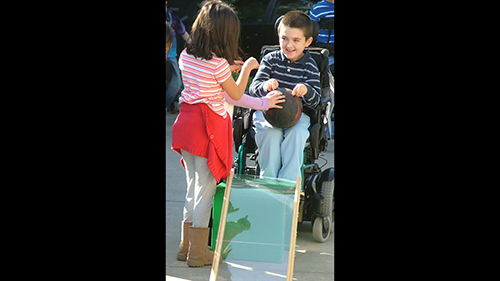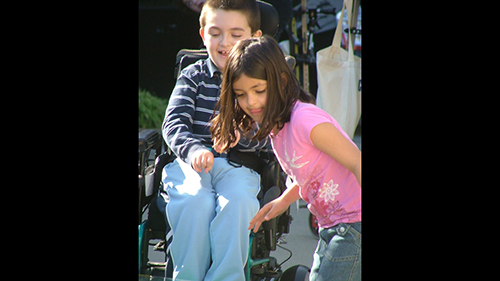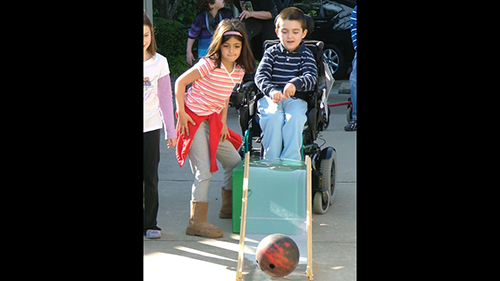Introduction
As educators we focus on providing the effective intervention strategies, materials, AAC/AT tools and supports that promote active participation, learning and success for our students with severe speech and physical disabilities in their academic and social development. Along with our efforts to put all of this in place it is equally important to focus on systematically fading adult support so that our students develop independence as learners and problem solvers with as much opportunity for uninterrupted student to student interaction as possible in both academic and social contexts.
Promoting independence requires the well-coordinated efforts of many, including peers, and the sharing of information among all involved. This includes information regarding the student’s communication modes and tools, other assistive technology devices and tools, interaction strategies and additional accommodations that allow the student to participate more independently. In order to systematically organize this information, we have adapted “The Participation Model”, a tool developed by David Beukelman and Pat Mirenda to increase academic and social participation in inclusive educational environments. The information shared through the use of this framework can occur through adult modeling during structured activities, during naturally occurring interactive activities, or through direct instruction. As peers demonstrate the ability to interact comfortably and reciprocally with students using AAC, incorporating strategies that allow them to work and play together independently, the adults can step back from direct involvement into a more indirect role. From a distance, the adult can ensure that all students are benefiting from the interaction and meeting their goals. When this is successful, it builds independence and fosters healthy relationships among students.
Planning for Independence
Students who use AAC need opportunities during each school day to function independently. This gives the students a sense of being competent, contributing members of the classroom and school community. This also gives the students a greater sense of their own ability to have control of their achievements and success in school, both academically and socially. The focus for our students is to move toward greater autonomy, independence and self-advocacy.
The student’s educational team members (teacher, instructional assistant, speech language pathologist, occupational therapist, physical therapist, assistive technologist) maximize opportunities for the student to be self-determined in their own education, in their social development, in their communication and language development, and in all activities during the school day, both academic and recreational by:
- Identifying and maximizing opportunities for inclusion and participation
- Identifying and removing barriers to inclusion and participation
- Engineering the environment
- Providing necessary supports to the student
- Engaging and training peer partners
Peer Partners
Through peer relationships:
- Children learn how to engage in reciprocal interactions
- Children see that they have commonalities/common interests
- Children develop understanding and acceptance of individual differences
- Children experience play that is child-centered and not adult driven
- Children have opportunities to build self-esteem/self-confidence
Click on an activity title to read the full description.
Fading Support
As peers demonstrate the ability to interact comfortably and reciprocally with students using AAC, incorporating strategies that allow them to work and play together independently, the adults can step back from direct involvement into a more indirect role. From a distance, the adult can ensure that all students are benefiting from the interaction and meeting their goals. When this is successful, it builds independence as well as fostering healthy relationships among students.
Fading Support Steps
- Model appropriate interactions for both the student and the peers within the interaction
- Provide coaching
- Step out
- Observe
- Provide additional support as needed
Example of Fading Support in a planned play sequence:
The students are encouraged to initiate play as the Instructional Assistant begins to step back. Additional students are welcomed into the game and the students are now able to negotiate directly with one another and inform each other about the rules.
The play environment and equipment have been engineered to maximize opportunities for social engagement and to minimize the need for adult support. The activity is familiar to the students, has a clear structure that allows for extended play, and is reciprocal and balanced. These elements lead to an effective social interaction and play experience.
The Instructional Assistant provides information and assistance only as needed to ensure that the play experience is successful and enjoyable for all students.
Now additional students feel comfortable joining in. As the interactions become more student-centered, the enjoyment level increases for all involved.
The Instructional Assistant is skillfully employing a ‘wait and see’ approach rather than interrupting the peers’ attempts to communicate and negotiate play.
The Instructional Assistant has stepped out to allow peers to step in and become active partners sharing in the experience. This boosts the students’ confidence knowing that they do not always need adult assistance.
They have achieved a successful and mutually enjoyable play experience, which benefits all and leads to the possibility of more of these experiences in the future.
Resources
Resources
Beukelman, D., & Mirenda, P. (2005). Augmentative and Alternative Communication: Supporting Children and Adults with Complex Communication Needs (3rd ed.) Baltimore: Paul H. Brookes.
Janney, R. & Snell, M. (2006). Social Relationships & Peer Support (2nd ed.) Baltimore: Paul H. Brookes.
Hunt, P., Doering, K., Maier, J., & Mintz, E. (2009). Strategies to support the development of positive social relationships and friendships for students who use AAC. In Soto, G., & Zangari, C. (Series Eds.). Practically Speaking: Language, Literacy & Academic Development for Students with AAC Needs (pp. 247-264). Baltimore: Paul H. Brookes.

